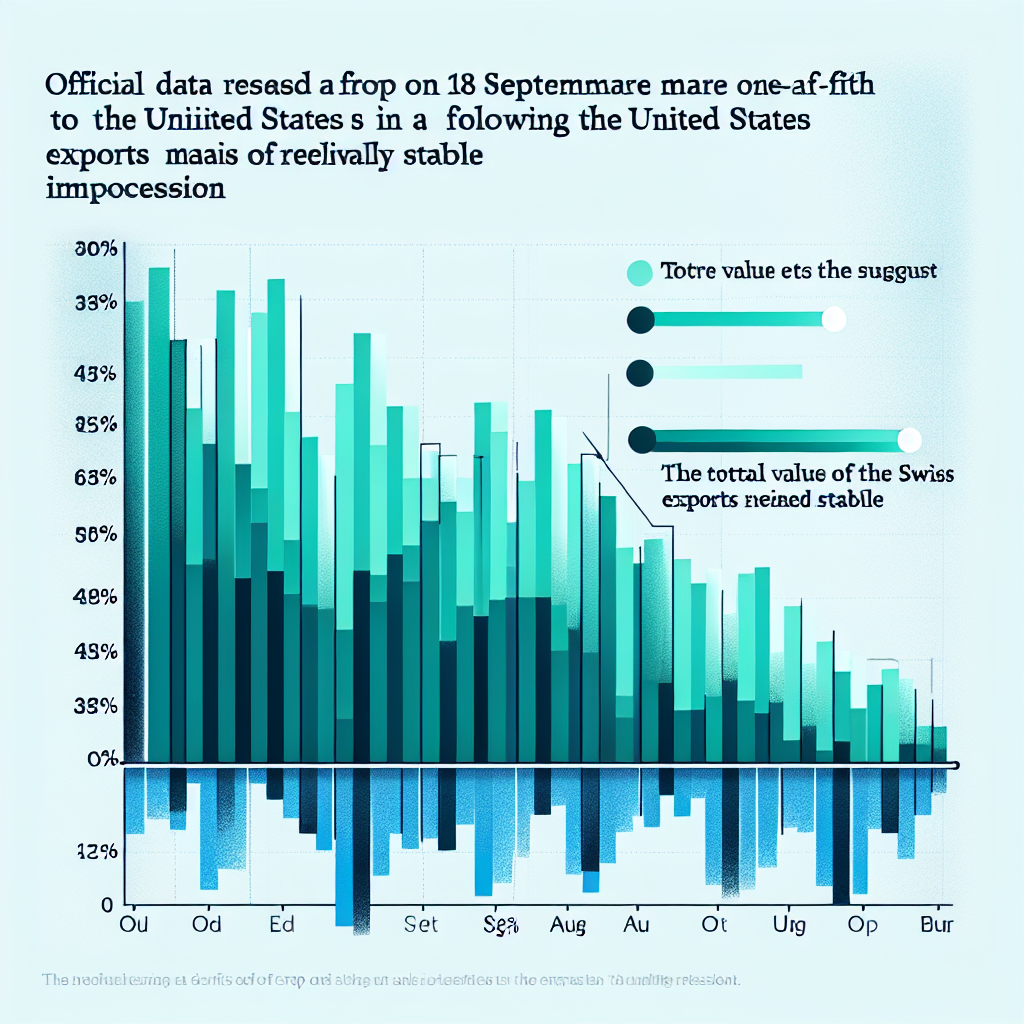Since the United States imposed a 39% tariff on Switzerland, official data released for the first time on September 18th showed that Swiss exports to the United States in August dropped by more than one-fifth. However, the total value of Swiss exports was not significantly impacted and instead showed growth. At the same time, the U.S. trade deficit with Switzerland narrowed.
The serious imbalance in goods trade is the reason behind President Trump’s announcement on August 1st to impose tariffs. The tariffs, which came into effect on August 8th, saw the United States imposing a 39% tariff on Swiss goods, with certain products such as pharmaceuticals and gold exempted.
Due to the tariffs, Swiss exports to the United States in August decreased by 22.1% compared to July, amounting to around 31 billion Swiss francs (about 39 billion U.S. dollars). This data does not include precious metals and gemstones, art, and antiques. Meanwhile, the U.S. trade deficit with Switzerland decreased from around 29.3 billion Swiss francs in July to about 20.6 billion Swiss francs (equivalent to around 26 billion U.S. dollars).
The United States has long been Switzerland’s largest single overseas market for goods. Despite the significant drop in Swiss exports to the U.S., the Swiss government stated that after seasonal adjustments, overall exports only nominally decreased by about 1%, and in real terms, grew by approximately 2.4%. This was mainly due to increased exports to the European Union and Canada. In August, Germany replaced the U.S. as Switzerland’s largest market for exports.
The Swiss government noted that the export decline has brought Swiss exports to the U.S. to their lowest levels since the end of 2020. Data indicated that the growth in Swiss exports to EU countries and Canada partially offset the decline in exports to the U.S. Data also showed that in August, Germany surpassed the U.S. to become Switzerland’s largest export market.
Among Swiss engineering companies, 31% are planning to transfer some operations to the EU to reduce the risk of damage to their exports to the U.S.
Swiss products such as watches, machinery, and precision instruments are facing pressure from high tariffs, leading to price increases in the U.S. The products with high unit prices and a dependence on the U.S. for exports are the most affected. For example, compared to July, Swiss watch exports decreased by 8.6%. States in Switzerland with high dependence on exports to the U.S., such as Geneva and Ticino, are experiencing significant impacts, and the overall export structure is undergoing a shift.
The main reason for the U.S. imposing tariffs this time is to reduce the trade deficit, the shrinkage of Swiss exports to the U.S. means the reduction of the U.S. trade deficit, achieving one of the policy demands. However, for the U.S. market, potential impacts may include rising costs for consumers and businesses.
The U.S. may seek supply chain adjustments and diversification, such as looking for more sources from the EU or Asia to replace Swiss imports, prompting a restructuring of global supply chains.
Overall, the substantial reduction in Swiss exports to the U.S. reflects the direct impact of tariff policy on trade flows: Swiss exporters are diversifying channels, the U.S. is successfully reducing the deficit but may face higher import costs and pressures for supply chain adjustments.

